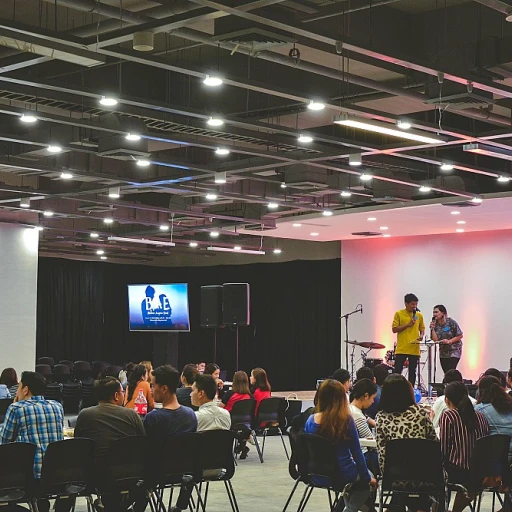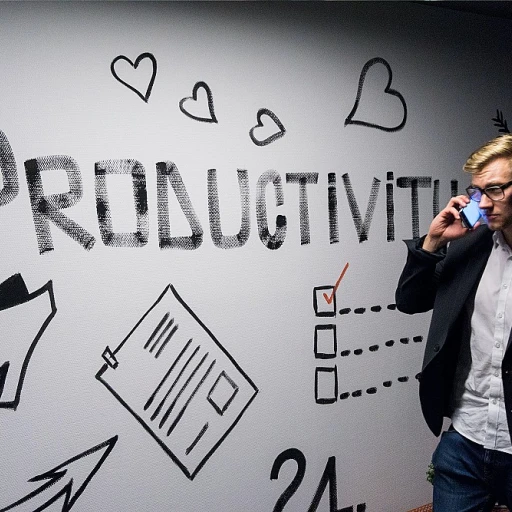
Understanding Ageism: A Hidden Workplace Challenge
The Underlying Challenge
Ageism is a pervasive issue that often goes unnoticed in workplace environments. Despite being subtle, its impact can be significant, influencing both the morale and performance of employees across different age groups. Understanding this hidden challenge is crucial for creating a harmonious workplace where older and younger workers can thrive equally. Age discrimination tends to manifest in various ways, such as bias against older adults over 50 or preference for younger employees when hiring.
Dissecting Age Discrimination
Ageism can sometimes be tricky to identify due to its insidious nature. Nonetheless, signs such as exclusion from important meetings, pressure to retire earlier than planned, or being overlooked for promotions based on age rather than performance are telltale indicators. Such age bias negatively affects older workers, leading them to feel undervalued and discriminated against. Understanding what contributes to ageism is a fundamental step towards addressing it effectively.
Legal and Social Implications
Legal frameworks like employment law are designed to protect employees age, promoting fairness and equality in professional settings. However, workplace discrimination still permeates various industries, leading to a decline in job satisfaction among employees. Employers must be proactive in recognizing age discrimination and strive to foster an inclusive environment where workers of all ages feel supported and valued.
Common Examples of Ageism in the Workplace
Recognizing the Signs of Ageism
Ageism in the workplace can manifest in various subtle and overt ways. Recognizing these signs is the first step toward addressing the issue. Many employees, both older and younger, may face discrimination based on age, affecting their job satisfaction and performance.
Subtle Discrimination Examples
- Exclusion from Projects: Older workers might be overlooked for challenging projects or leadership roles, with employers assuming they lack the energy or innovation of their younger counterparts.
- Jokes and Stereotypes: Casual remarks or jokes about an employee's age, whether they are older or younger, can create a hostile work environment. These comments often reinforce stereotypes that can undermine an individual's confidence and performance.
- Assumptions about Technology Skills: There is a common misconception that older employees struggle with new technologies. This bias can lead to fewer opportunities for training and development, impacting their career growth.
Overt Discrimination Examples
- Retirement Pressure: Some companies may subtly or directly pressure older employees to retire early, often using performance-based evaluations as a pretext.
- Hiring Bias: During the recruitment process, older applicants might be passed over in favor of younger candidates, despite having comparable or superior qualifications and experience.
- Unequal Pay: Age discrimination can also manifest in the form of unequal pay, where older employees are paid less than their younger counterparts for similar roles.
Understanding these examples of ageism is crucial for fostering a more inclusive workplace. By addressing these issues, companies can improve their employer branding and create a more equitable environment for all employees. For more insights on enhancing workplace culture, consider exploring creative ways to celebrate workplace diversity.
Impact of Ageism on Employer Branding
The Ripple Effects of Ageism on Employer Branding
Ageism in the workplace can have far-reaching implications, not only on individuals but also on a company's employer brand. When age discrimination becomes apparent within an organization, it can severely impact its reputation, both internally and externally. One of the primary effects is diminished morale and decreased job satisfaction among older employees. When experienced workers feel undervalued or discriminated against based on age, their motivation and work performance can suffer. This, in turn, can lead to increased turnover rates, affecting the workforce's overall stability. Moreover, potential employees monitor how companies treat their current workers. Reports of age discrimination or bias can deter talented professionals from seeking employment with an organization, fearing age-related challenges. This issue not only restricts the talent pool but also hampers the company's efforts to foster a diverse and inclusive work environment. An employer brand tainted by ageism can also face challenges in retaining younger employees. Younger workers are more likely to pursue organizations that demonstrate inclusivity and equality, valuing the contributions of all employees, regardless of age. To combat these challenges and improve employment prospects, companies must actively work on showcasing their commitment to diversity and inclusion. This includes developing age-friendly policies and promoting success stories of overcoming age bias. By doing so, organizations can strengthen their reputation, attract and retain talent from diverse age groups, and maintain competitive advantage. Companies can look to examples of successful age diversity strategies to guide their efforts in enhancing employee benefits.Strategies to Combat Ageism
Implementing Comprehensive Anti-Ageism Policies
To effectively combat ageism in the workplace, companies must start by establishing clear and comprehensive anti-ageism policies. These policies should be integrated into the broader framework of anti-discrimination guidelines. It's crucial for employers to communicate these policies clearly to all employees, ensuring everyone understands the importance of age diversity and the negative impact of age discrimination. Regular training sessions can help reinforce these policies, making sure that both older and younger employees are aware of their rights and responsibilities.
Fostering an Inclusive Culture
Creating an inclusive culture is vital in addressing ageism. Employers should promote a work environment where employees of all ages feel valued and respected. This involves encouraging collaboration between older and younger workers, which can lead to a more dynamic and innovative workplace. Mentorship programs can be particularly effective, allowing older employees to share their experience and knowledge with younger colleagues, while also learning new skills and perspectives from them.
Evaluating and Adjusting Recruitment Practices
Recruitment practices often inadvertently contribute to ageism. To prevent this, companies should evaluate their hiring processes to ensure they are not biased against older workers. This includes using age-neutral language in job postings and focusing on skills and experience rather than age. Employers should also consider diverse recruitment channels to reach a broader range of candidates, including older adults who may bring valuable experience to the company.
Providing Opportunities for Continuous Learning
Continuous learning opportunities are essential for maintaining a skilled and adaptable workforce. Employers should offer training and development programs that cater to employees of all ages. This not only helps older workers stay up-to-date with the latest industry trends and technologies but also demonstrates the company's commitment to their professional growth. By investing in the development of all employees, companies can enhance their overall performance and reduce the risk of age-based discrimination.
Monitoring and Addressing Ageism Complaints
Finally, it's important for companies to have a robust system in place for monitoring and addressing complaints related to ageism. This involves creating a safe and confidential process for employees to report instances of age discrimination. Employers should take these complaints seriously and investigate them promptly, taking appropriate action to resolve any issues. By doing so, companies can demonstrate their commitment to a fair and equitable workplace, enhancing their employer brand and attracting a diverse range of talent.
Case Studies: Companies Leading the Way
Examples of Success in Tackling Age Bias
Tackling ageism in the workplace effectively requires strategic efforts, and some organizations have become shining examples by leading the charge. These companies have successfully implemented strategies to diminish age discrimination and foster a more inclusive environment for workers of all age groups. Let's explore a few of these strategies that have proven particularly successful.- Revamping Recruitment Practices: A number of companies have started to reshape their recruitment processes to ensure fair treatment of both older and younger employees. By removing birthdates and graduation years from resumes, they aim to eliminate unconscious bias during the hiring process.
- Emphasizing Continuous Learning: Forward-thinking organizations are investing in the ongoing education and skill development of their employees, regardless of age. Such initiatives not only boost performance but also demonstrate the value placed on the expertise and potential of older workers.
- Facilitating Intergenerational Mentorship: Numerous companies have set up mentoring programs that connect older employees with their younger counterparts. This fosters a culture of mutual learning and respect, breaking down age-based barriers. Producing a cultural shift towards appreciation and cooperation is pivotal in reducing workplace age discrimination.
- Anti-Discrimination Policies and Training: Implementing comprehensive policies that clearly articulate a zero-tolerance stance on age discrimination can be transformative. Some firms also mandate regular training sessions to educate employees and managers on the nuances of ageism and how to identify and mitigate it in daily work situations.
- Promoting Flexible Work Options: Recognizing that older employees may have different work-life balance needs, some companies have introduced flexible work hour arrangements and remote work options. These policies not only support older workers in maintaining employment but also enhance the employer's brand image, showcasing inclusivity and adaptability.
Future Trends in Employer Branding and Age Diversity
Towards an Inclusive Future: Embracing Age Diversity
One of the key trends driving employer branding in the coming years is the emphasis on age diversity in the workplace. As companies strive to attract and retain top talent, recognizing and integrating diverse age groups can significantly enhance their reputation and performance.
A growing number of organizations recognize that valuing employees based on their skills, rather than their age, is crucial. This means not only ensuring equal opportunities for older adults facing retirement age but also creating an environment where younger employees feel included and valued. Addressing ageism workplace issues by fostering age diversity promotes innovation and boosts team dynamics.
In the face of widespread age discrimination, companies are becoming increasingly aware of the importance of age-inclusive policies. With changes in employment law aimed at reducing workplace discrimination, businesses are encouraged to review their practices. Employee wellness programs, flexible work arrangements, and personalized career development plans are just a few examples of how companies can support their diverse workforce.
Another trend is the focus on performance-based rewards and recognition. By linking compensation and advancement opportunities to actual performance rather than arbitrary age biases, employers can create more equitable and motivating work environments.
As we look to future trends, businesses that successfully integrate these practices can anticipate improved employee satisfaction and enhanced company culture. Creating a supportive and diverse environment is not just a moral obligation but a strategic advantage in the global job market.













